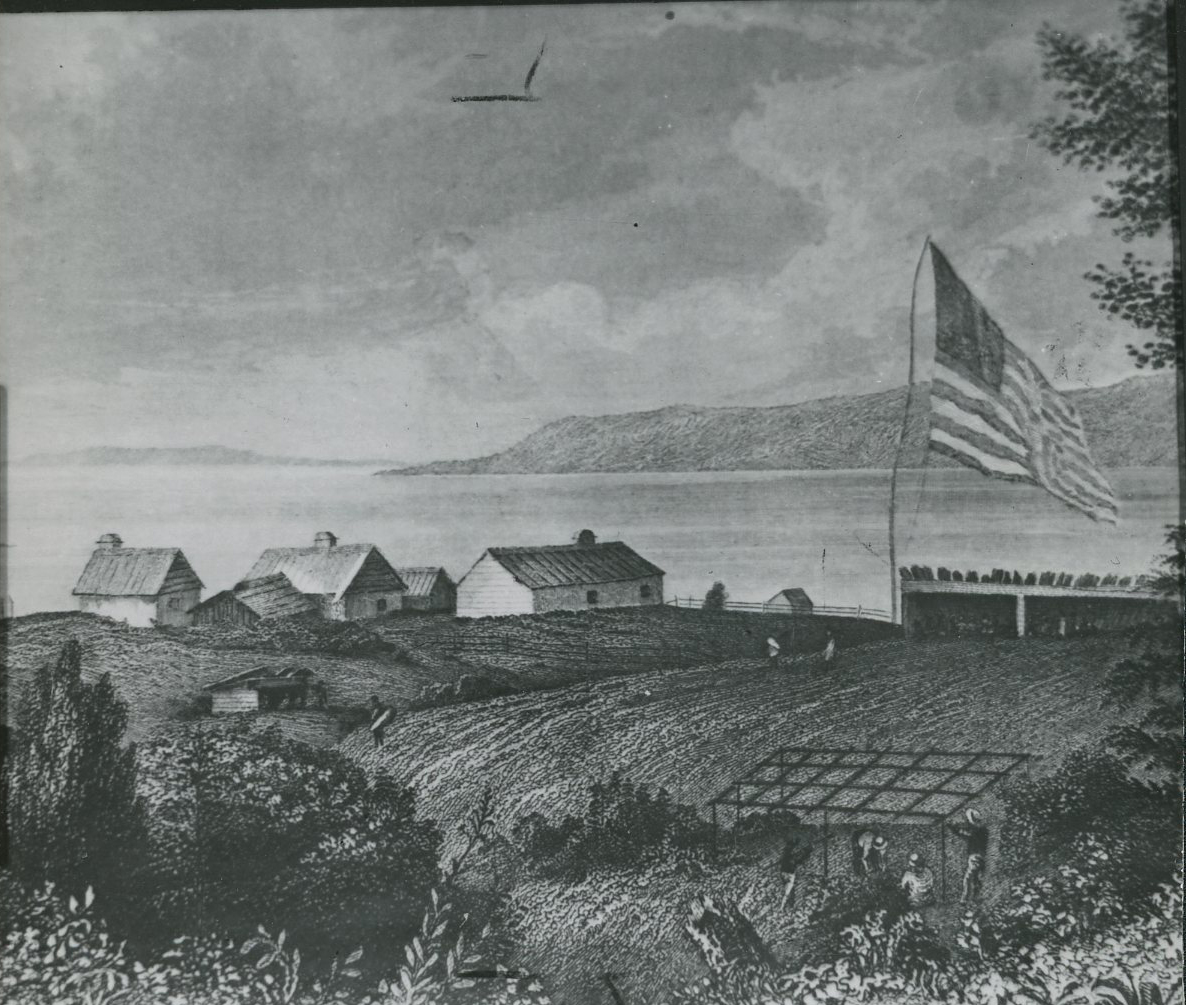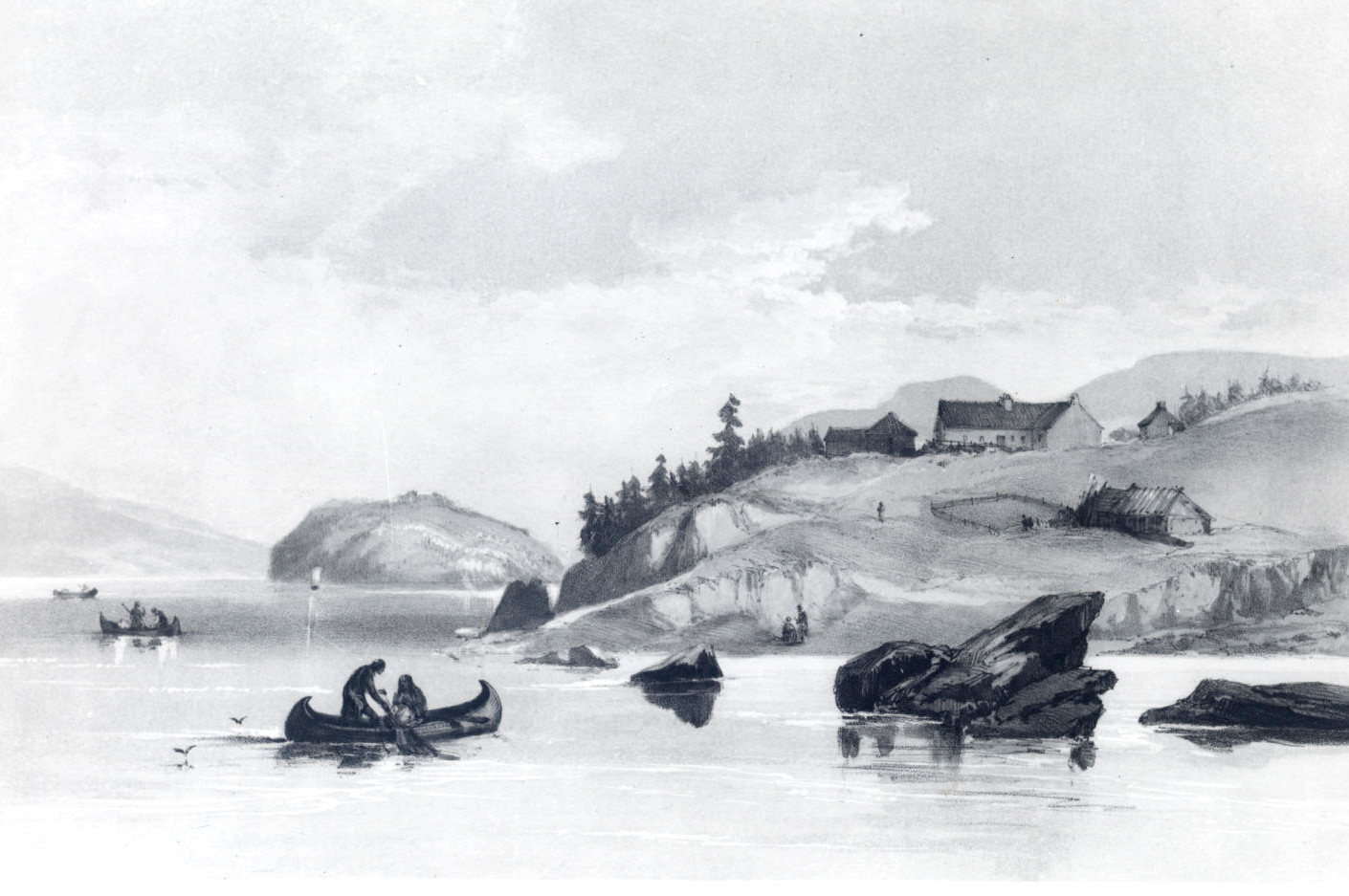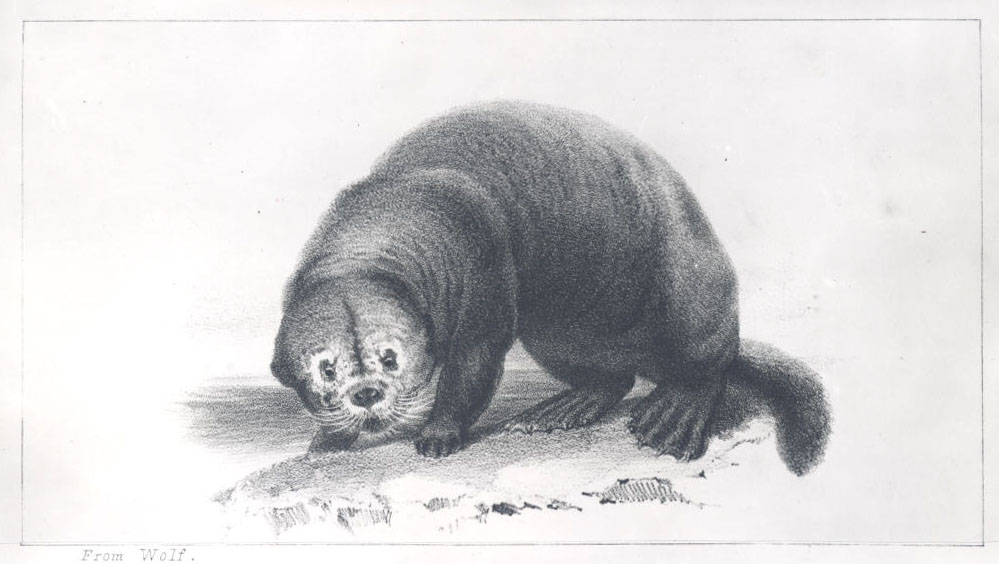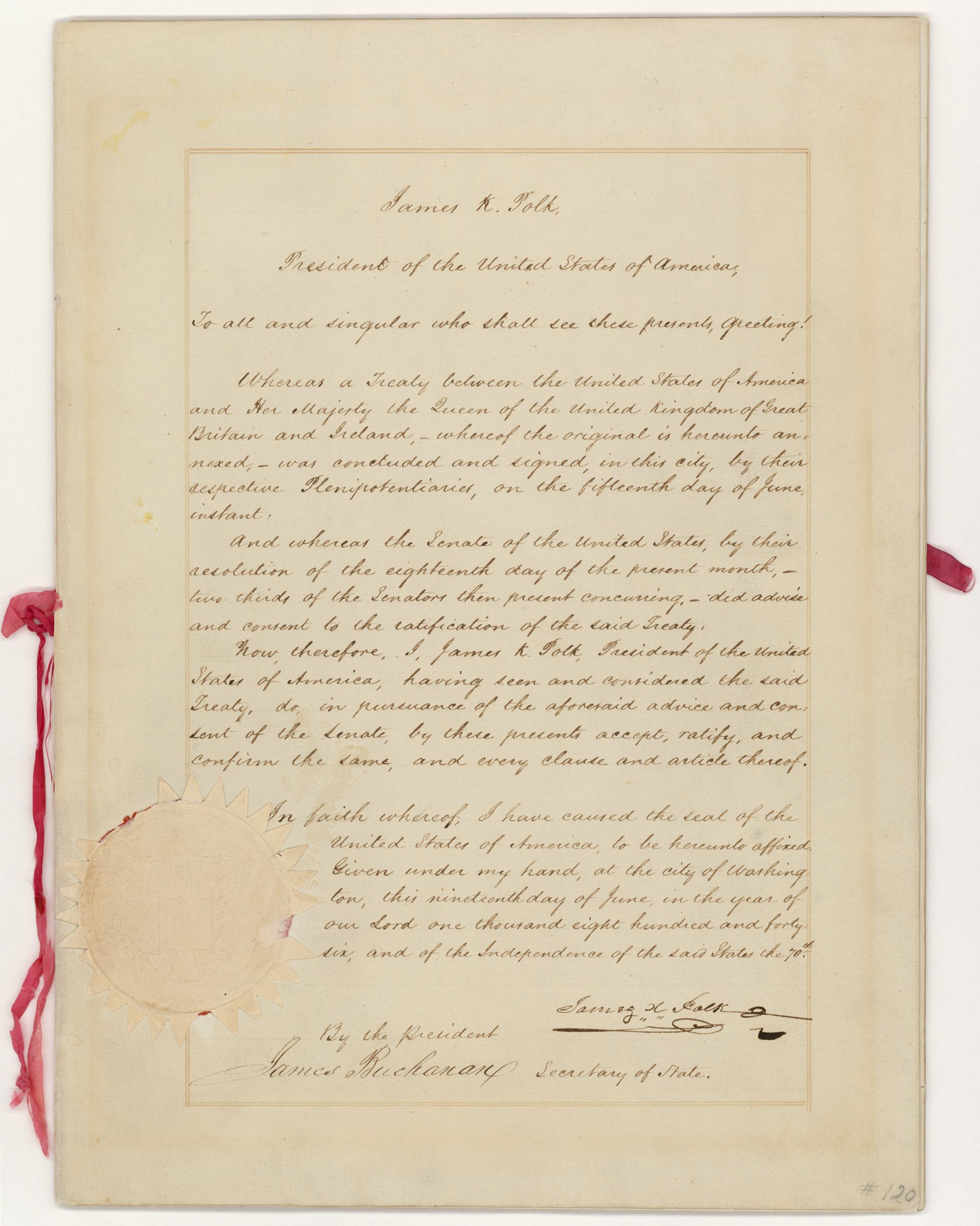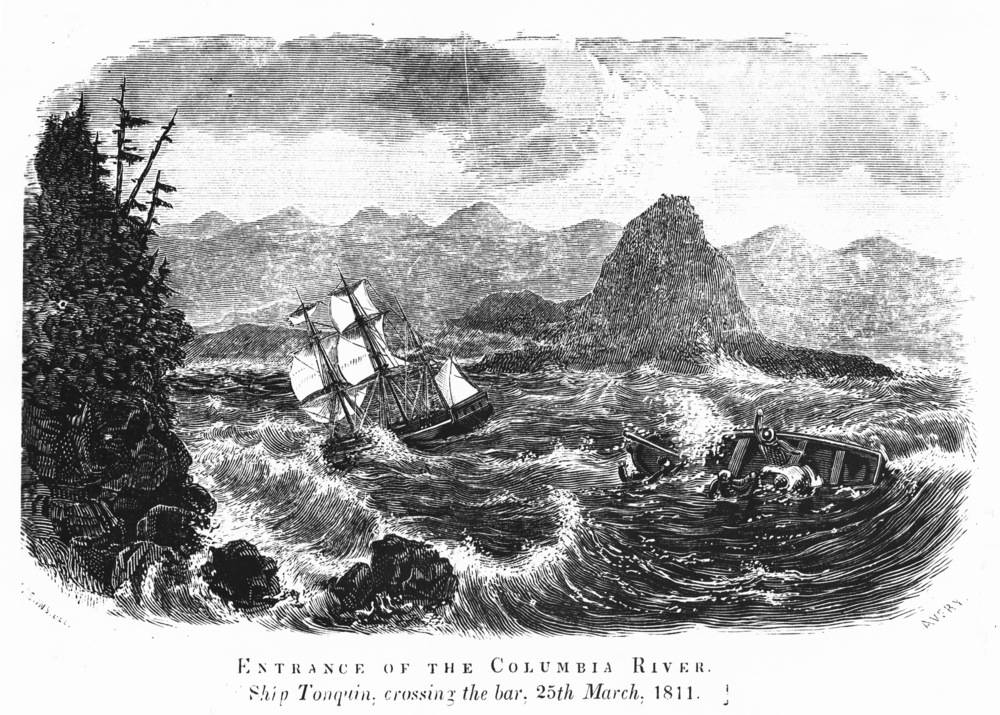The HMS Racoon (also Raccoon) was a British Royal Navy sloop of the Cormorant class, built and launched in 1808. During the War of 1812, the ship was the second British Royal Navy ship to enter the Columbia River (the first was the surveyor HMS Chatham in 1792) and the only one in history to do so as part of a military action.
In September 1813, the Racoon, under the command of Capt. William Black, was sailing the South Atlantic as part of a squadron escorting the North West Company’s fur-trading vessel Isaac Todd to the mouth of the Columbia. As the Isaac Todd proved to be an extremely slow sailer and fell behind the navy ships while rounding Cape Horn, the Racoon was ordered to proceed to the Columbia alone and to “destroy, and if possible, totally annihilate any settlements which the Americans may have formed.” This was a reference to Fort Astoria, an outpost of the American-owned Pacific Fur Company and, as Black and his men were well aware, potentially a valuable prize.
When the Racoon crossed the Columbia River Bar in late November, Black found to his deep disappointment that the fort was already in the possession of the North West Company, a Canadian fur company. The Pacific Fur partners had been persuaded to sell off their precariously situated property to their British competitors after being informed that the Royal Navy was en route to seize it. According to fur trader Gabriel Franchère, when Captain Black finally saw Fort Astoria, he exclaimed in disgust, “What, is this the fort I have heard so much of? Great God, I could batter it down with a four-pounder in two hours!”
Nonetheless, on December 13, the officers of the Racoon and the men of the North West Company formally claimed the fort and the surrounding country for the British crown. As a Union Jack was hoisted over the palisades and a bottle of Madeira wine was broken on the flagpole, the station was renamed Fort George in honor of George III.
Captain Black soon made preparations to sail for Hawaii to hunt for American ships. On December 31, when the Racoon crossed the Columbia’s treacherous bar, the ship struck its bottom twice and lost a portion of the keel. With water pouring in and men frantically working the pumps night and day, the Racoon made instead for the coast of California, arriving at the Spanish colony of San Francisco on January 14. There, with the help of the Isaac Todd, which had fortuitously appeared in the area, the Racoon was repaired and continued its activities in the Pacific.
The Racoon’s mission to the Columbia was significant beyond the fur-trading era. At the conclusion of the War of 1812, the Treaty of Ghent would require the United States and Britain to return all lands captured in the conflict. Because Captain Black had claimed the Oregon Country as a spoil of war for his king, Americans would contend that the region (whose sovereignty was perennially in dispute) should rightfully be “returned” to the United States. In 1818, the two nations agreed to joint occupancy of the territory. The boundary was eventually settled by the Oregon Treaty in 1846.
The HMS Racoon was decommissioned and sold in 1838. In 1973, the twelve-foot section of the sloop’s keel that had been lost on the Columbia in 1813 washed ashore. It is currently on exhibit at the Columbia River Maritime Museum in Astoria.
-
![]()
Fort George, drawing by Charles Wilkes, 1841.
Courtesy Oregon Hist. Soc. Research Lib., 00535
-
![Sketch by H. Warre]()
Fort George, 1845.
Sketch by H. Warre Courtesy Oreg. Hist. Soc. Research Library, 35111
Related Entries
-
![Fort George (Fort Astoria)]()
Fort George (Fort Astoria)
Fort George was the British name for Fort Astoria, the fur post establi…
-
![Fur Trade in Oregon Country]()
Fur Trade in Oregon Country
The fur trade was the earliest and longest-enduring economic enterprise…
-
![North West Company]()
North West Company
First organized in 1779 by a small group of Canadian fur traders based …
-
![Oregon Treaty, 1846]()
Oregon Treaty, 1846
On November 12, 1846, the Oregon Spectator announced that Captain Natha…
-
![Pacific Fur Company]()
Pacific Fur Company
The Pacific Fur Company, employee Alexander Ross wrote in 1849, was “an…
Related Historical Records
Map This on the Oregon History WayFinder
The Oregon History Wayfinder is an interactive map that identifies significant places, people, and events in Oregon history.
Further Reading
Gough, Barry. Fortune’s a River: The Collision of Empires in Northwest America. Madeira Park, BC: Harbour Publishing, 2007.
Hussey, John A., ed. The Voyage of the Racoon: A ‘Secret’ Journal of a Visit to Oregon, California and Hawaii, 1813-14. San Francisco: The Book Club of California, 1958.
Rees, Mike, ed. The Remarkable Voyage of the H.M.S. Racoon 1813-14; Mission: Capture Fort Astoria on the Columbia River; Unabridged Ship’s Remark Book by Captain William Black. Seattle: University Bookstore Press, 2011.
Ronda, James P. Astoria and Empire. Lincoln: University of Nebraska Press, 1990.



